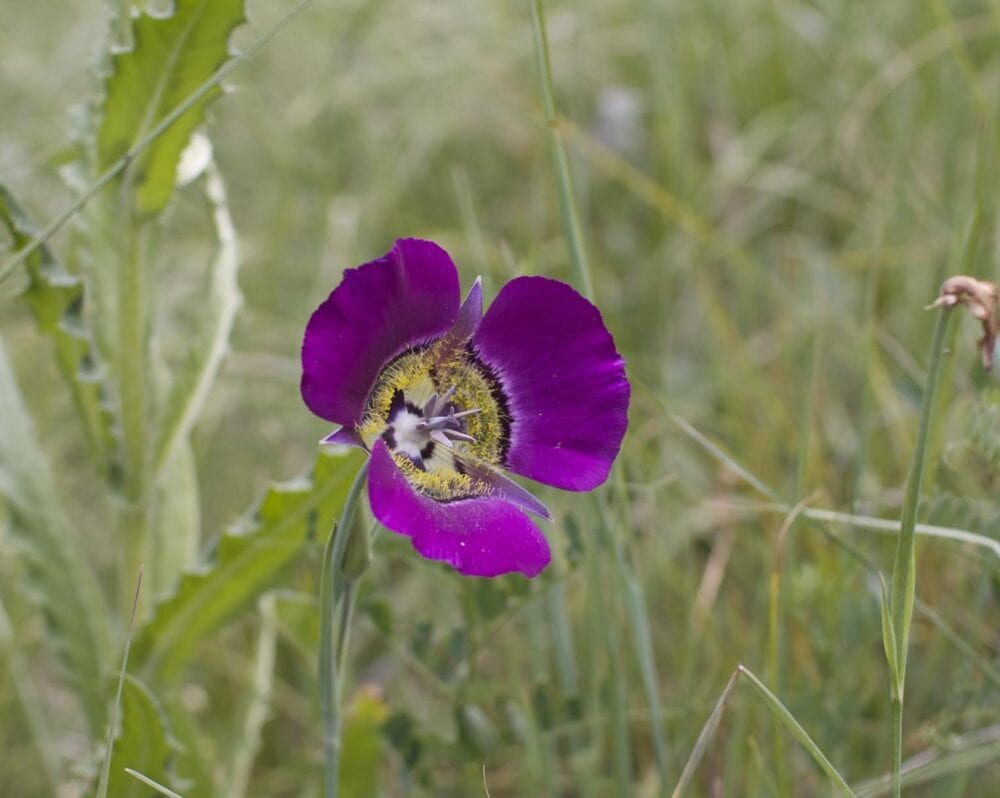This week’s wildflower is one of our most beautiful—mariposa lily (Calochortus nuttallii). It blooms in our high mountain meadows, often stretching upwards to compete with the tall grasses. As the pictures show it has a range in color variation. In Colorado it is nearly white, more like our low altitude Sego Lily. The flower is so beautiful that nobody notices the graceful thin leaves. As a lily, it grows from a bulb and bides its time until moisture is right. Some years a field that had only a few before is covered with them. Also, as a lily, its flower parts come in threes or sixes—three petals, three sepals, six stamens—count them!
Some more information about this plant is from to Montana Plant-Life.org, including its edible and medicinal uses:
Edible Uses: The bulb of Gunnison’s mariposa lily is edible, raw or cooked. One report says that the raw bulb tastes like a raw new potato. It has a crisp nut-like texture and a pleasant flavor when cooked. The bulbs can be dried and ground into a powder for making a sweet porridge, mush etc. They were eaten by many tribes, and were widely used by settlers in Utah when food was scarce. Leaves are edible cooked. It is hard to obtain a sufficient quantity of the leaves since they are small and use of the leaves will weaken the bulbs. The seeds can be ground into a powder. The flower buds are edible raw and can be added to salads.Medicinal Uses: A tea of the plant was taken internally by the Acoma and Laguna Indians to treat rheumatic swellings and by the Navajo to ease the delivery of the placenta. Juice of the leaves were applied to pimples.



Chick, can we get bulbs of the mariposa lily to grow in our yards (I live in WR). I have never seen
them available. TX, Bev
Hi Beverly,
Thanks for your question! Chick says he’s never heard of anyone getting them to grow in a garden. The mariposa normally grows at much higher elevations, so it may be a stretch to get them to grow in White Rock.